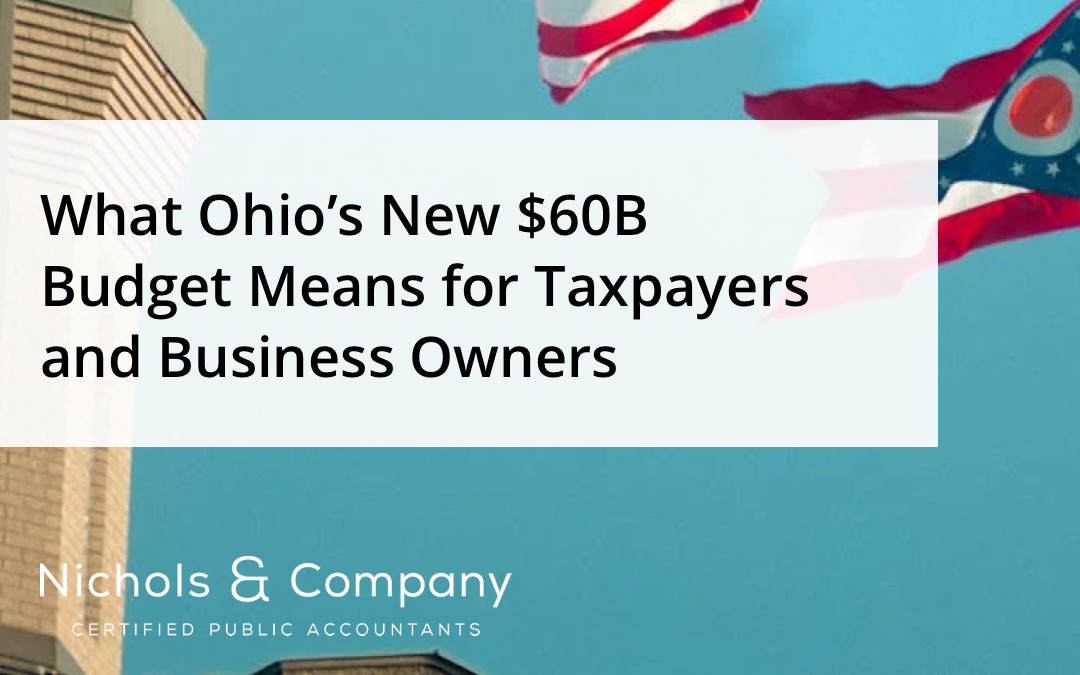What Ohio’s New $60B Budget Means for Taxpayers and Business Owners
Ohio’s new two-year, $60 billion operating budget has hit the books, and brings with it a host of changes that will affect many aspects of Ohio taxpayers' and business owners' daily lives. Governor Mike DeWine signed the budget at the close of June, issuing 67 line-item vetoes along the way. Those vetoes removed multiple provisions that could make a comeback if the Ohio General Assembly decides to override them in the coming months.
Potential Impacts for Ohio Taxpayers
Some aspects of the budget that will affect day-to-day life for those filing personal income taxes:
-
2.75% Flat Income Tax. Perhaps the most attention-grabbing facet of the new budget is the plan to phase in a 2.75% flat income tax by 2026 for individuals earning more than $26,050. Under current rules, taxpayers in different brackets pay escalating rates up to a top rate of 3.5%. That top rate will gradually decrease to 2.75%, which amounts to a tax cut for many higher earners.
- Withholding Adjustments. The eventual phase-in of the 2.75% flat tax could lower your tax bills; however, those who had comfortable withholding arrangements under the older brackets may find themselves either significantly under or over-withholding as the structure changes. We suggest working with your accountant to finetune any payroll adjustments.
- Effect on Social Services. Because the top rate is decreasing, some worry that reduced state revenue could prompt lawmakers to re-examine and possibly lower funding to programs that benefit lower-income residents. Eligibility thresholds for Medicaid, SNAP (food assistance), and other benefits remain in a state of flux, and any override attempts could reintroduce shortened enrollment windows or new program limitations. If you rely on or support others who rely on these services, keep an eye on legislative updates.
- Property Tax Uncertainty. DeWine’s vetoes on measures like capping school district savings and altering how emergency levies are calculated could still see reversal. If overridden, some property owners might see changes in their future tax bills. For now, it’s a wait-and-see situation, but it’s wise to review your property tax statements regularly—and be prepared for potential ballot issues regarding school funding in the near future.
Potential Impacts for Business Owners
- Business Income Tax Rate. Despite the set 2.75% tax rate for individual earnings over $26,050, business income will still be subject to a 3% rate. Although it may not seem like a big difference, that fraction of a percentage point can be meaningful over large sums.
We are monitoring legislative developments to help keep you informed. At N&Co, we are available to provide year-round guidance to keep you compliant in Ohio’s ever-evolving tax landscape. If you would like to discuss how the new tax laws impact your personal or business tax situation, please reach out to your accountant or the office at 614-891-5423. As always, it is our goal to make your life #LessTaxing!

